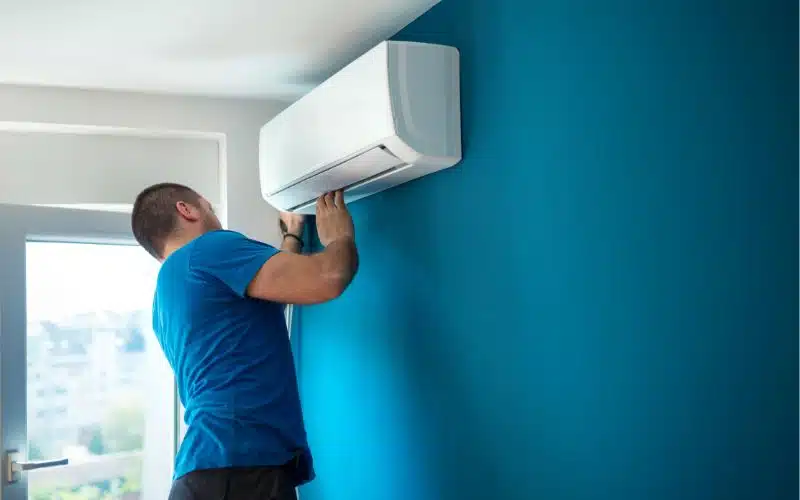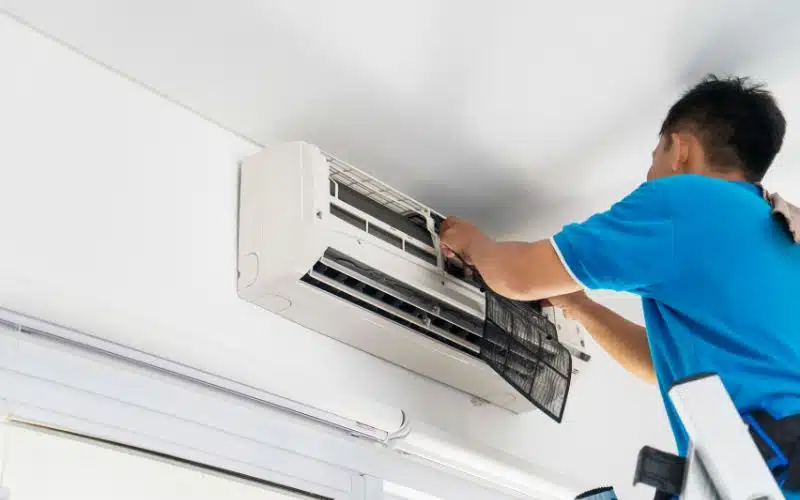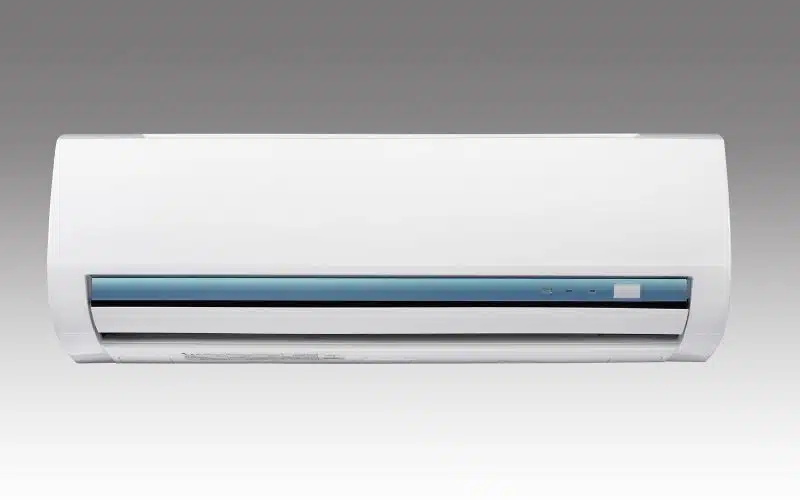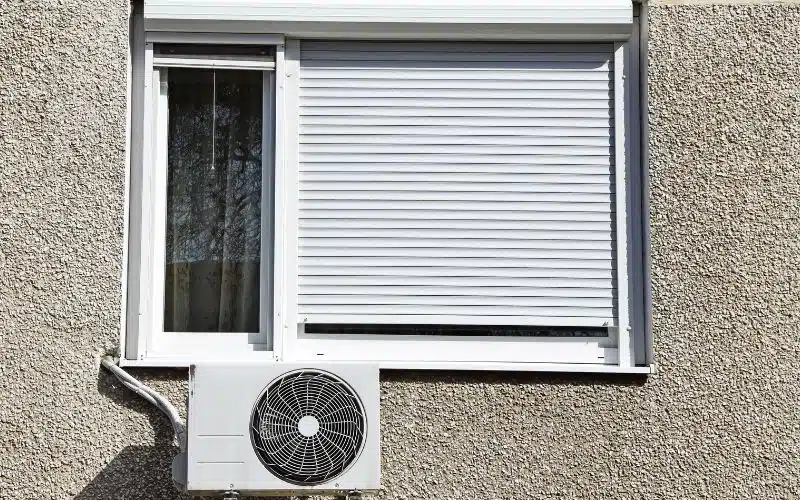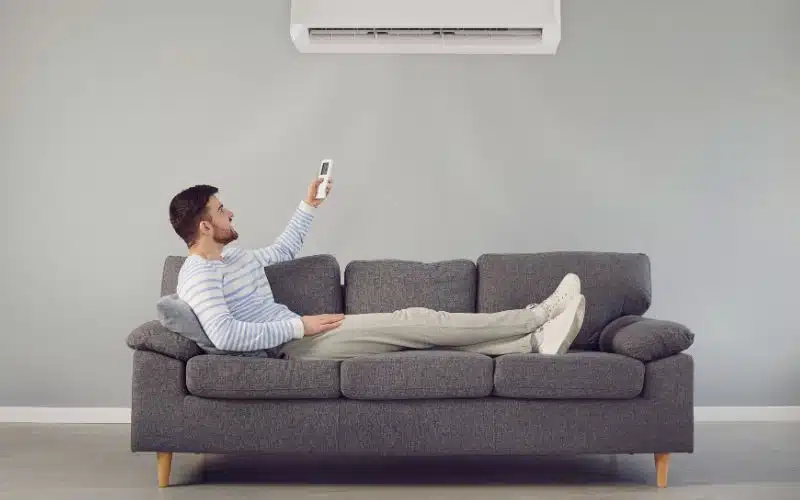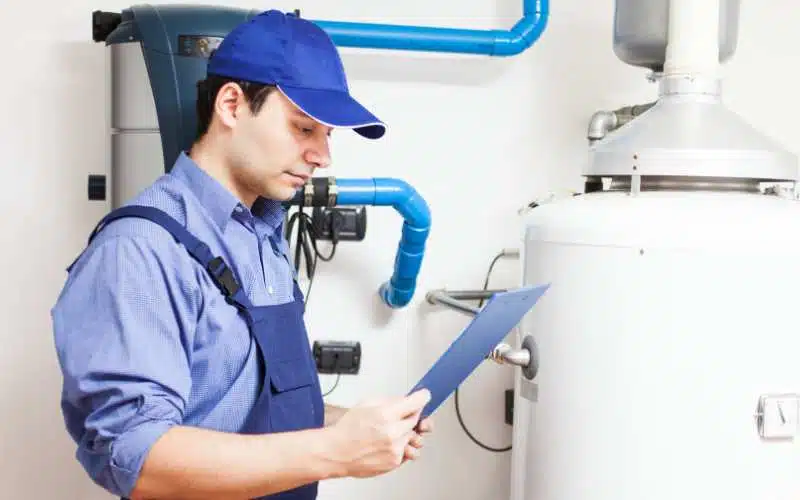Window air conditioners are usually the most economical choice for cooling a room. They are great for small spaces because of their efficiency and cost-effectiveness than central air conditioners.
But how many amps does a window air conditioner use? This article will dive deep insights into that.
How many amps air conditioners use depends on the cooling capacity, size, and features they have. While small window ACs with cooling capacities of 5000 BTU use approximately 4-5.5 amps, 115v large window ACs with capacities of 12000 use currents of about 9-12.5 amps. Additionally, window air conditioners with built-in heaters use more amps.
How Many Amps Does a Small Window AC Use?

Knowing the current draw of your AC can go a long way in helping you reduce unnecessary bills.
Generally, most small window air conditioners utilize 4-5.5 amps currents. Alternatively, you can check the label on AC.
Most likely, it’ll be on an attachment on the AC, but consult your user manual if you don’t see any such information on the AC.
In addition, you’ll find other specifications, such as the Energy-Efficiency Rating. Small windows ACs usually are labeled as 125v and 115v; such low voltages typically possess about four to five current usage.
Small windows ACs usually don’t use large currents because they probably have low cooling capacities.
But many factors like the AC’s cooling stage and environmental setting can likewise come into play.
The cooling stage doesn’t specifically reduce or increase the actual; it depends on the AC’s power components, which are always on and off.
So when power components like the compressor start-up, you’ll typically discover a higher current draw. Whereas when they’re at rest, the current draw is usually low.
Also, the temperature you’ve set the AC can affect how much current it will use. I’ve already established that the system uses more current when cooling cycles start.
And note that until the system reaches the temperature to which you’ve set it, the cooling stage won’t stop; more current will be going.
Most homeowners always feel that regulating the thermostat to a meager setting will reduce the current use, but there’s no such thing. The AC’s environment setting can primarily affect the expected current draw.
Yes. If the window AC is in an environment with heat, the current usage will increase. And it’s because the AC will need to work harder to cool the environment.
Small window ACs ordinarily don’t draw many currents, but you must be careful of some practices to avoid the experience of abnormal current usage resulting in increased power.
Thus, some tips include always setting the temperature correctly, regularly cleaning the ducts, avoiding leaks, ensuring proper insulation, and regular maintenance.
Thus, some tips include always setting the temperature correctly, regularly cleaning the ducts, avoiding leaks, ensuring proper insulation, and regular maintenance.
Set the temperature correctly. You should adjust your thermostat some degrees above the average level. If you so do, the window AC will use less current and consume less power.
In addition, you can get a smart thermostat to ensure the temperature is always set correctly.
But though it’s automated, it still has disadvantages. So as you’re looking into the upsides, note the downsides too.
| Upsides | Downsides |
|---|---|
| It reminds you of specific maintenance like changing the AC filter and cleaning the ducts. | It is quite expensive. |
| It minimizes current use and saves power. | It can be complex to operate. |
Always clean the ducts and avoid their leakage.
If your AC’s vent and ducts are always dirty, the AC won’t breathe properly and consume more current than usual. Yes, struggling against the restricted airflow(blocked vents) will work harder.
Thus, it’s good you ensure clean ducts and vents to prevent your small window AC from using more current and power than it should.
Also, leaking ducts are very dangerous, so avoid them. Openings in ductworks allow conditioned air to leak out; unfiltered warm air will have the opportunity to escape inside the AC.
And due to such occurrences, the window AC will struggle to cool the environment and, in the process, use more current. Be cautious. Ensure proper insulation
Insulation plays a crucial role in keeping cool air from escaping. So if the AC environment is insulated correctly, the current will be expected.
But conversely, when the environment isn’t properly insulated, the current usage will increase.
As a result, the AC will need more work; it’ll use more current, and power consumption will increase.
Altogether, the current usage from small window air conditioners remains within the range of 4-6 amperes, just that many things can come into play.
How Many Amps Does a 24000 BTU Window Air Conditioner Use
24000 BTU window air conditioners have an average current usage of about 9-13 amps.
Window ACs with high cooling capacities like 24000 usually operate on 230v, with ampere ratings ranging from 9-13 amps.
But this range can go higher depending on factors like the surrounding temperature. In situations like this, the SEER rating can affect the values.
And besides that, some window AC models use more current than others. Research on Midea U-Shaped window ACs shows that they use currents more than 30% of their counterparts.
Below is information on the average current usage of similar cooling capacities( 24v models).
| Similar Cooling Capacities for 24V models | Average Current Usage |
|---|---|
| 18000 BTU | 7.2-8.6 amps |
| 12000 BTU | 4.9-5.2 amps |
You should know that the current draw or amperage rating differs with disparate voltages. So a 24000 BTU window AC labeled 230v will not have the same amperage rating as the one labeled 115v.
The one labeled 115v will instead draw more current. Also, a window AC that operates in a heating environment will require more current.
Thus if your 24000 BTU window air conditioner operates in a hot environment, its current draw will increase to about 20 amps or even more.
As a guide, be cautious not to get an AC bigger than your room size. You’ll be causing an irrelevant current draw, while your bills will increase unnecessarily.
How Many Amps Does a 5000 BTU Window AC Use
Typically, 5000 BTU window ACs operate with 115 volts, with an average current draw of about four amps.
But remember that if a hot environment surrounds the AC, the current draw will increase to about ×2 of the expected value.
I advise you to get an AC that will fit your room size. Getting an AC smaller than your room will also result in a high current draw.
How Many Amps Does a 10000 BTU Window Air Conditioner Use
10000 BTU window air conditioners typically operate with a voltage of 115v and have an amperage rating of about eight amps.
But when in a hot environment, the current draw becomes higher- close to 10 amps. Similarly, ACs with low cooling capacities and a 115v can operate with regular household outlets.
But when it comes to ACs with large cooling capacity, you’ll need a dedicated circuit. This suggestion is because they possess more significant energy requirements.
How Many Amps Does a 6000 BTU Window Air Conditioner Draw
The current draw for 6000 BTU window air conditioners is five amps. The current usage for most 6000 BTU window ACs falls within the range of 4.2-6.4 amps.
A simple way of estimating the current usage of any 115v air conditioner is equating to 0.8 amps every 1000 BTU.
Using this alternative to find the current draw for a 6000 BTU window AC, we’ll have 5.2 amp, which is not far.
Summary
Window air conditioners are one of the most popular and effective cooling systems; their current usage range from 4-20 amperes.
On usual grounds, they possess a low amperage rating, but when certain factors come in, the current draw increases.
